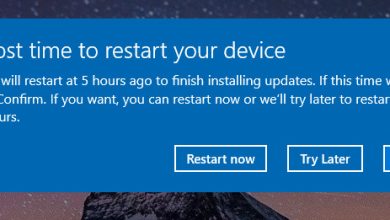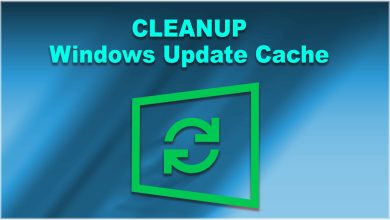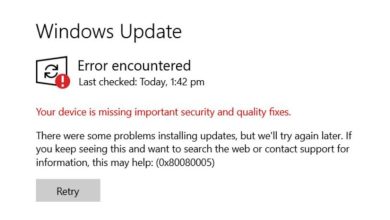How to Fix Windows Update Error 0x80190001
The ‘Error 0x80190001’ error is caused while updating your Windows when the update files aren’t downloaded properly. Windows updates are often quick and you get the latest features without any issue, however, you shouldn’t take that for granted. There are times when you’ll be troubled before your system gets the update. Apparently, the errors often caused are due to the third-party software installed on your system that interferes with the update and hence an error pops up.
When you try to update your Windows, what you are doing is downloading the files required for the update from Microsoft’s servers, however, if you aren’t able to get the files on your system safely, you naturally won’t be able to complete the update. The Error 0x80190001 can be taken as an example.

What causes Windows Update Error 0x80190001?
The error is not generic and can be caused by a number of things such as —
- Incomplete download. The error is usually caused if the files required for the update aren’t downloaded properly.
- Third-party software. Most of us use third-party softwares which can interfere with the Windows update and cause the error to emerge.
- Incorrect time and date. Whenever you try to update your Windows, make sure your Time and Date are set correctly. Incorrect time & date can potentially cause certain errors to pop up.
The error can be solved by the following solutions: –
Solution 1: Run Windows Update Troubleshooter
To begin with the basics, you should run Windows Update Troubleshooter to check what is causing the error to pop up. If it is something generic, the troubleshooter will take care of it and you’ll get your update in no time, hence, it’s worth a shot. To run the troubleshooter, do the following:
- Press Winkey + I to open Settings.
- Go to ‘Update and Security’.
- Navigate to the ‘Troubleshoot’ tab.
- Click on ‘Windows Update’ and then hit ‘Run troubleshooter’.
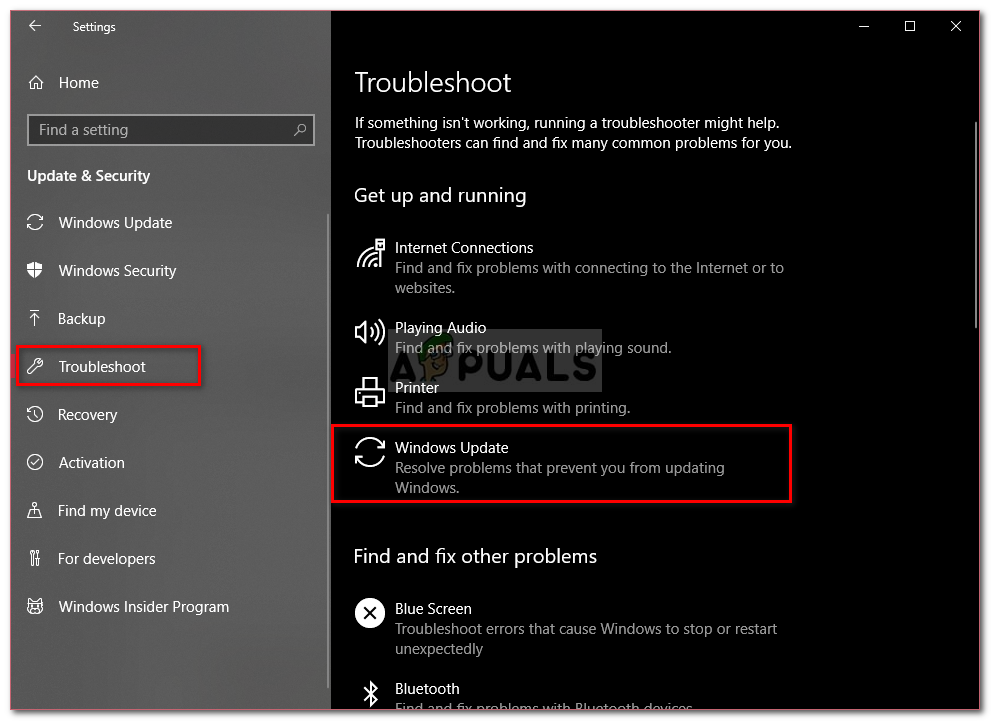
Run Windows Update Troubleshooter
Wait for it to complete and then try to update your system.
Solution 2: Update Time & Date
If Time and Date are set incorrectly on your system or you’ve chosen a wrong time zone, it may be the cause of the error. If your time or date is way too off, your request to download the update files may be rejected by Microsoft’s servers due to which you won’t be able to download the update. Therefore, make sure the time and date on your system are correct.
Once you’ve corrected your Time and date, it is time to synchronize with time.windows.com. Here’s how to do it:
- Open Control Panel.
- Navigate to ‘Clock and Region’.

Clock and Region (Settings) - Click on ‘Date and Time’.
- Switch to Internet Time tab.
- Click ‘Change settings’.
- Hit ‘Update now’.
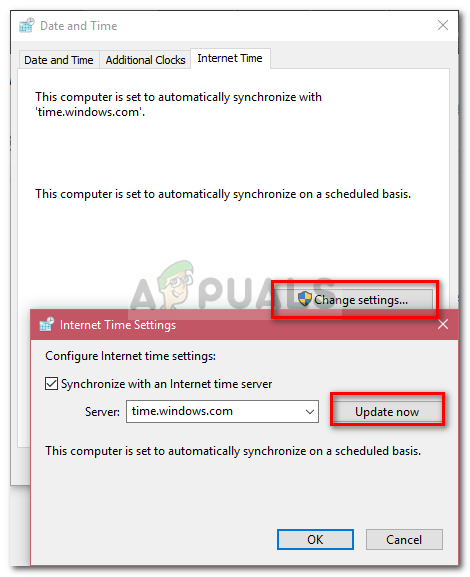
Synchronize Time and Date
Solution 3: Disconnect all External Hardware
If you’ve connected some external hardware to your system like USB, your smartphone etc. occasionally, the connected hardware like your USB or smartphone may interfere with the system and cause the error to pop up. Hence, to eliminate the possibility, make sure you’ve disconnected any external hardware and then try to update your system.
Solution 4: Empty the Software Distribution Folder
Software Distribution Folder is located in Windows directory which is tasked to store the files required by a Windows update temporarily. Make sure not to mess with this folder under normal conditions, however, you can delete the contents of the folder should you encounter an error that involves it. Do the following to empty the folder:
- First and foremost, you’ll have to stop ‘wuauserv’ and ‘bits’ services. To do this, Press Winkey + X and select ‘Command Prompt (Admin)’.
- Once the cmd loads, type the following commands:
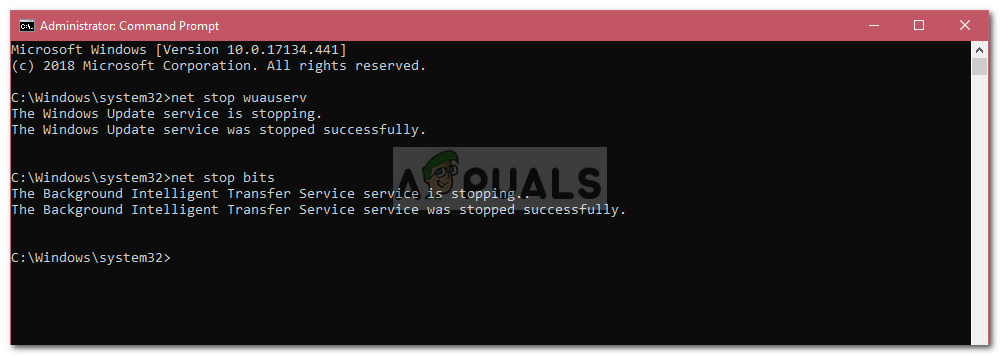
Stopping Services using Command Prompt
net stop wuauserv net stop bits
- After that, navigate to the following path:
C:\Windows\SoftwareDistribution
- Delete all the files and folders there.
- After that’s done, you’ll have to start the services again. Enter the following commands in Command Prompt (Admin):
net start wuauserv net start bits
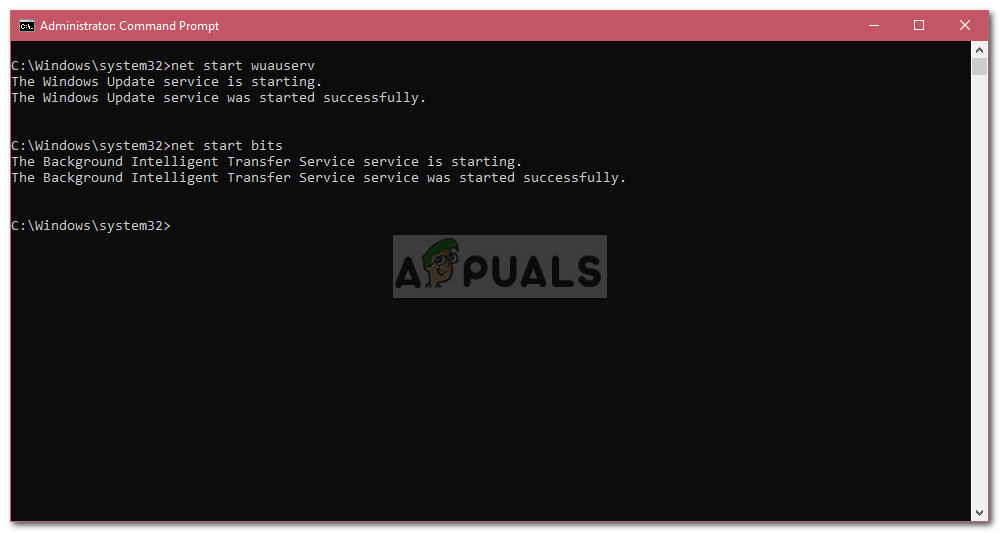
Solution 5: Perform a Clean Boot
Sometimes, the third-party software that you are using can be the ones altering with your Windows update due to which the update isn’t proceeding. In such a case, you’ll have to perform a Clean boot to check whether a third-party software is interfering with the update.
To perform a Clean Boot, please follow this article on our site.
After you’ve performed a Clean boot, try to update your Windows. If the update is installed without any issues, this means a third-party software was interfering with the update.
Solution 6: Use Windows Media Creation Tool
Finally, if the above-mentioned solutions don’t work for you, you’ll have to update your computer using Windows Media Creation Tool. Using Windows Media Creation Tool, you won’t lose your files and your Windows will be updated to the latest version. Here’s how:
- Firstly, download the tool from Microsoft’s website; can be found here.
- After the download has completed, open the file.
- Accept the terms, then click Upgrade this PC.
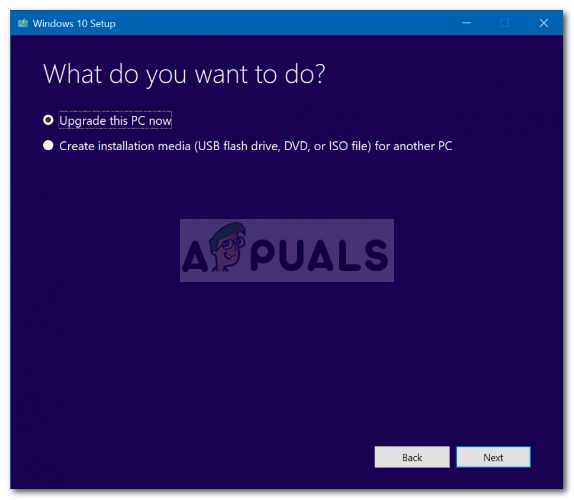
Upgrading PC - Make sure to check ‘Keep Personal files’ to ensure that your files are safe.
- Click Install to start the update.

